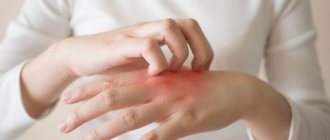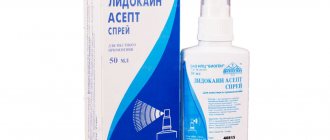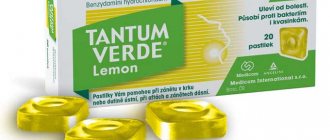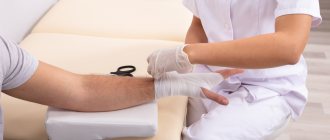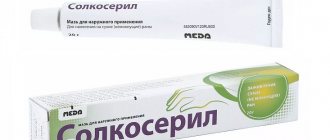Miramistin is an unremarkable bottle with a spray nozzle. But he can do so many things! If you look at the list of indications, we can say that the drug helps with literally everything. From anything that is infectious in nature. Or is about to become one. Burns, wounds, viruses, operations and much more are the scope of application of Miramistin. It relieves inflammation and has an antimicrobial effect. It is especially pleasant that the simple composition is characterized by a virtual absence of contraindications or adverse reactions, and the drug can be prescribed from birth.
Miramistin copes well with burns
Description
Miramistin is a domestic broad-spectrum antiseptic drug that is used for the prevention and treatment of bacterial, fungal and viral infections. Initially, the drug was intended to disinfect compartments on Soviet spaceships and stations. And now Miramistin has shown itself to be excellent in the prevention and therapeutic treatment of wounds, purulent-septic processes, the appearance of which accompanies surgery and traumatology. Miramistin effectively fights pathogenic microorganisms, therefore it is applicable in gynecology, urology, dentistry, otolaryngology and other branches of medicine.
But you should not think that Miramistin simply has an antimicrobial effect; it is quite strong and fights even those strains that are insensitive to other antibiotics. Miramistin interacts with ascomycetes, yeast and yeast-like fungi, dermatophytes, and some other pathogenic fungi. And what is especially important, Miramistin is able to influence human immunodeficiency viruses, herpes, etc. That is, demonstrate an antiviral effect. The medicine is also quite active against pathogens that cause sexually transmitted diseases (STDs).
Miramistin prevents infection of burns and wounds, as it accelerates the absorption of purulent secretions, stimulates the process of tissue regeneration and the manifestation of the body's protective reactions.
And all these wonderful properties practically do not cause allergic reactions or irritation to the skin. This is what it means that the product was developed for the space industry.
Causes of runny nose and cough
A cough in an infant may be due to the following reasons:
- respiratory viral infections;
- bacterial infections and complications: whooping cough, tracheitis, laryngitis, pharyngitis, bronchitis;
- allergic reaction;
- congenital heart diseases.
The cough reflex can also be physiological. For example, it may occur in response to dry air, dust entering the infant’s respiratory tract, or excessive salivation during teething. A runny nose also often occurs against the background of the appearance of the upper incisors.
Coughing after sleep with a runny nose is common: nasal discharge flows down the back wall of the throat, which provokes a spasm and a reflex release from the contents. You need to sound the alarm when the cough is barking or severe, persists for a long time after waking up, and is accompanied by a high body temperature. It is also important to get help from a doctor as soon as possible in case of green sputum or the appearance of blood streaks in the discharge. A paroxysmal, uncontrollable cough is also a reason to show the child to the doctor as soon as possible. But a rare dry cough should not be treated on its own; often it can be the only sign of incipient bronchiolitis or obstructive bronchitis.
It is important to treat a runny nose in a newborn child in a timely manner. Even slight nasal congestion can be a serious problem, as the baby cannot breathe or eat properly. This can cause moodiness, sleep disturbances and digestive problems. Impaired nasal breathing can lead to damage to the lower respiratory tract, as the baby is forced to breathe through the mouth.
Indications
The range of uses of Miramistin is quite wide. So, the attending physician may prescribe the use of Miramistin in the following cases:
- In traumatology and surgery: prevention of suppuration, treatment of purulent wounds. Used in the treatment of purulent-inflammatory diseases of the musculoskeletal system.
- In obstetrics and gynecology: treatment and prevention of suppuration of wounds and injuries received during childbirth, treatment of inflammatory and infectious processes of the genital organs (vulvovaginitis, endometritis).
- In venereology and dermatology: treatment and prevention of dermatomycosis, pyoderma, also used for mycoses of the feet, candidiasis of the skin and mucous membranes, in particular, for thrush.
- In urology: treatment of urethritis (acute and chronic forms) and urethroprostatitis.
- In dentistry: prevention of infectious and inflammatory processes occurring in the oral cavity. Treatment of stomatitis, gingivitis, periodontitis. Miramistin also carries out hygienic treatment of removable dentures.
- In otorhinolaryngology: used for sinusitis, otitis, laryngitis, pharyngitis, chronic tonsillitis. Miramistin is prescribed for sore throat. In particular, the drug is used in complex therapy for pharyngitis, chronic tonsillitis, as well as for sore throat in children from the age of three.
- Combustiology: treatment of superficial and deep burns of II and IIIA degrees, preparation of burn wounds for dermatoplasty.
- The solution is used for individual prevention of the development of diseases that are sexually transmitted to humans (syphilis, gonorrhea, chlamydia, trichomoniasis, genital herpes, genital candidiasis, etc.).
When to use children's throat spray
Like any other medicine, a spray for sore throat in children can only be used for certain indications:
- Inflammatory diseases of the ENT organs
- Inflammatory diseases of the oral cavity
- Surgical interventions and injuries
- Dental procedures.
Inflammatory diseases of the ENT organs
This is a large group of diseases that develop under the influence of pathogens and cause unpleasant symptoms.
The most common diagnoses in childhood are:
- pharyngitis - inflammation of the mucous membrane of the pharynx;
- laryngitis – inflammation of the mucous membrane of the larynx;
- Tonsillitis (tonsillitis) – inflammation of the tonsils.
Inflammatory diseases of the oral cavity
These are one of the most insidious diseases.
A child’s tendency to frequent ARVI may be associated with chronic inflammatory and infectious processes in the oral cavity, because the oral cavity is anatomically and functionally connected to the upper respiratory tract, paranasal sinuses and even the middle ear, which makes the treatment of diseases in this area very important. The most common diseases in children are:
- gingivitis – inflammation of the mucous membrane of the gums;
- glossitis - inflammation of the tissues of the tongue;
- stomatitis – inflammation of the oral mucosa;
- candidiasis – fungal infection of the oral mucosa;
- periodontal disease is a large group of gum diseases in which there is severe damage to the tissues of the supporting apparatus of the teeth;
- calculous sialadenitis - inflammation of the salivary glands with the formation of stones in them.
Surgical interventions and injuries
Violation of the integrity of the tissues of the mucous membrane, regardless of whether it occurred during surgery or during injury, is always a high risk of infection and a set of unpleasant symptoms. Pain, burning, itching and other manifestations immediately after an injury or at the stage of wound healing cause severe discomfort to the child, and if an infection occurs, severe complications can develop.
Dental procedures
Removal of soft or hard plaque on teeth, tooth extraction, period of adaptation to braces and other dental procedures may require antiseptic treatment of the oral cavity to prevent (or treat) possible infectious processes, as well as pain relief.
Children's spray for the throat and mouth is the best option for symptomatic and antimicrobial treatment in the above cases. This is due to the fact that when spraying the product, there is no direct contact of the inflamed tissue with cotton swabs, tampons and other auxiliary means, which relieves the child of unpleasant sensations and at the same time ensures uniform coverage of the mucous membrane with the drug.
How to use Miramistin
The use of Miramistin as an antiseptic drug is quite widespread. In addition to the areas listed in the table below, the medicine is prescribed for the treatment of acne, as a prevention of influenza and colds, and for diaper rash.
How to use Miramistin correctly
Please note that Miramistin may cause irritation of the nasal mucosa.
Any prescription of the drug, indication of the dosage and duration of the course are made by the attending physician.
| Disease | Course duration | Reception |
| Purulent sinusitis. Tonsillitis, pharyngitis and laryngitis. | From 4 to 10 days. | The maxillary sinus is washed with a sufficient amount of the drug. Gargling and/or irrigation (10-15 ml) 3-4 times a day is indicated. |
| Stomatitis, gingivitis, periodontitis. | Until remission occurs. | Rinse the mouth with 10-15 ml of the drug, 3-4 times a day. |
| Surgery, traumatology, combustiology. | 3-5 days. | 2-3 times/day. irrigate the surface of wounds and burns, loosely pack wounds and fistula tracts, fix gauze swabs soaked in the drug. |
| Prevention of postpartum infection. C-section. | 5-7 days. 7 days. | Irrigation with a gynecological nozzle is indicated before childbirth, during childbirth, after each vaginal examination and in the postpartum period, 50 ml of the drug in the form of a tampon (2 hours). Before the operation, the vagina is treated, during the operation - the uterine cavity and the incision on it, and in the postoperative period, tampons moistened with the drug are inserted into the vagina (2 hours). |
| Angina. | Until remission occurs. | Rinse 4-5 times/day. |
| Urethritis and urethroprostatitis. | 10 days. | Miramistin is injected using a urological applicator into the urethra 2-3 ml 1-2 times a day. |
| Prevention of sexually transmitted diseases. | Miramistin is used no later than 2 hours after sexual intercourse. | Using a urological applicator (gynecological attachment), insert Miramistin into the urethra for 2-3 minutes: for men (2-3 ml), for women (1-2 ml) and in the vagina (5-10 ml). Treat the skin of the inner thighs, pubis, and genitals. After the procedure, it is recommended not to urinate for 2 hours. |
| Thrush, inflammatory diseases of the genital organs. | 7-14 days. | A tampon is moistened with Miramistin and inserted intravaginally. Douching is indicated. |
| Purulent otitis. | Until remission occurs. | 2 ml of solution is injected into the external auditory canal. |
Miramistin during pregnancy and lactation
Miramistin can be used by pregnant women and nursing mothers, but, as is usually the case with this group of patients, use is possible after consulting the doctor supervising them. They can be used to gargle, rinse the nose and treat affected surfaces, since Miramistin does not enter the bloodstream. But in any case, an obstetrician-gynecologist should prescribe the drug during pregnancy and breastfeeding.
Miramistin for children
Miramistin for children
If we touch on the issue of using Miramistin in pediatrics, the drug can be prescribed by a doctor for children during an exacerbation of pharyngitis or during the exacerbation stage of chronic tonsillitis. If such conditions are diagnosed, then most likely the pediatrician will prescribe irrigation of the child’s throat with Miramistin.
- children 3-6 years old: press the head of the spray nozzle once (3-5 ml per irrigation), 3-4 times/day;
- children 7-14 years old: press twice (5-7 ml per irrigation), 3-4 times/day;
- children over 14 years old: 3-4 times pressing (10-15 ml per irrigation), 3-4 times/day.
As for the nose, care should be taken here, since Miramistin can have an irritating effect on the mucous membrane. Also, Miramistin is prescribed to young patients if they have chickenpox. The skin is treated with Miramistin in order to disinfect it. If the drug is prescribed to an infant, it is most likely for the treatment of surfaces that require disinfection. Miramistin, due to its composition, accelerates the regeneration of the epithelium. After the drug has dried naturally, you can use diaper rash cream or a special powder containing talc.
The instructions for use stipulate the age of the child from which the use of Miramistin is permissible. Thus, children under one year of age undergo therapy with Miramistin only under the supervision of a specialist; children up to three years of age can be prescribed the drug solely for indications. Remember that children's bodies are sensitive, and even such a safe drug as Miramistin can cause allergic reactions.
Analogs
Analogs
At the moment, one structural analogue of the drug Miramistin has been released on the pharmacological market:
- Okomistin (eye drops).
If you do not take into account the composition, then in terms of therapeutic action the antiseptic Chlorhexidine is closest to the drug Miramistin. You can also note Octenisept.
Miramistin or Chlorhexidine?
Most often, when they talk about replacing the drug Miramistin, Chlorhexidine is cited as an example. What is the significant difference between these drugs? If you focus on the indications for use, they are almost identical. True, it is believed that Chlorhexidine has more side effects and is generally toxic. But this disadvantage has a downside. This “aggressiveness” is directed against microbes. Miramistin is a more gentle remedy, it is safe, so it is prescribed for the treatment even of infants. The drug Miramistin does not monitor negative reactions of the body to its use; it is less likely to cause a burning sensation and unpleasant consequences in the form of dysbacteriosis.
